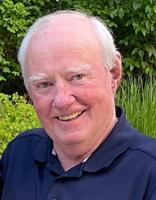MANKATO — Applications for affordable public housing in Mankato, already far exceeding the supply, essentially doubled since the COVID-19 pandemic.
Pre-pandemic, the annual number of applications for the 259 public housing units in Blue Earth County was about 300, said Nancy Bokelmann, who oversees housing programs for the city of Mankato and Blue Earth County.
“Since the pandemic, that number has increased to approximately 600 applications,” Bokelmann told the Mankato City Council. “So we’ve really doubled the need, based on the applications. The other piece you need to know is that on an annual basis, we have a turnover of units of about 26.”
Even with housing staffers occasionally going through the list — weeding out a few hundred applicants who no longer can be reached or are no longer interested — the waiting list has grown to 2,137 applicants.
Based on the units that become available each year, the final person on the list would get an affordable apartment or home in about 82 years.
“There is a huge demand for affordable housing in our community represented there,” Bokelmann said of the statistics.
Bokelmann and City Manager Susan Arntz asked the City Council, acting in its role as the Economic Development Authority, to close the waiting list for several months starting on April 30.
Refusing to take new applications won’t actually change anything.
“Although it seems significant, it’s really more of a housekeeping — an affordable-housing housekeeping — item,” Arntz said.
Between now and the fall, staff will review all of the people who once applied for a future shot at a home in government-owned housing such as Orness Plaza; the smaller public housing complexes in Mapleton, Madison Lake and Eagle Lake; or in the 126 scattered townhouses, duplexes and single-family homes in the program. Some may have outdated contact information and won’t be reachable. Some may have found a place to live or now have enhanced incomes that make them ineligible. Some may no longer want to live in the Mankato area.
And some may have applied with the mistaken idea that a federally-funded public housing spot awarded by Mankato could easily be transferred to an affordable housing unit elsewhere in the country.
“Many times, what we find is some of those people applied hoping that when their name came up here they could take it back to their other community or their other state,” Bokelmann said. “Under public housing, we can’t do that. We have a specific unit here in Mankato. So if they’re not willing to move to Mankato, there’s no benefit for them to be on our waiting list.”
It’s true that federal regulations require housing agencies to accept applications from anywhere in the United States, Bokelmann said. But they also allow the agency to create a “residency preference” that puts locals first in line.
“So we’re serving those families in our community first before we go to some of those applicants on our waiting list,” she said.
Even the other major program Bokelmann administers — the Housing Choice Voucher Program — is targeted at people living in about 20 south-central and southeastern Minnesota counties. That program provides a financial voucher for renters to use at a privately owned apartment building to cover the gap between what they can afford and the monthly rent.
That program serves about 600 income-eligible households in Mankato and other parts of the county, allowing participants to pay no more than 30% of their earnings in rent.
During the summer and early fall while the waiting list is closed, Bokelmann and her staff will be working with a software vendor to create a new application process that will allow future applicants to be considered for both types of assistance — public housing and vouchers for privately owned apartments.
“Having one waiting list would really improve our services to the families we’re serving and will definitely reduce the likeliness of them applying for the wrong program,” she said. “... I really think it’s worthwhile to do that — to take the time to contact everyone, clean it up and get it ready for the next waiting list.”
Considering the length of the current list, there’s no danger of running short of people to fill any housing units that open up while the new system is being put in place.
“I want to reiterate,” Bokelmann said, “that we do have an adequate supply of applicants on our list.”





























Commented
Sorry, there are no recent results for popular commented articles.